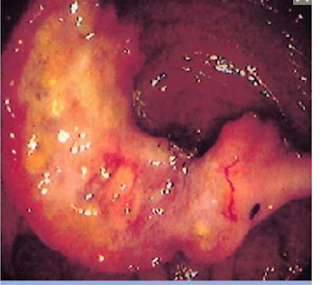Nephrolithiasis • Calcium oxalate (and to some degree calcium phosphate) stones
account for 80% of all kidney stones • Remaining stones are uric acid (10%),
struvite (10-15%) and cystine (1%) stones • It is possible for patient to have
multiple stones and for them to be more than one type of stone Risk Factors •
Crystallization occurs when otherwise soluble solutes precipitate due to
supersaturation or changes in urinary pH, protein content, or due to reaction
with other solutes • Crystals cause epithelial injury, deposition of stone
formation, bleeding, obstruction, and pain • Frequently identified risk factors
include hypercalciuria, hyperoxaluria, hypocitraturia, decreased calcium intake,
increased oxalate intake, increased animal protein intake, and decreased
hydration • There is more than 2-fold increase in risk of kidney stones with
positive family hx of kidney stones • Patients with history of kidney stones
have a 10-30% 3-5 year recurrence rate • 25% of people with gout will get kidney
stones Signs and Symptoms • Classic presentation is severe acute intermittent
flank pain lasting 20-30 minutes per episode with radiation to the groin,
testicles, or vulva, often with hematuria • CVA tenderness is found in
approximately 50% of patients with kidney stones • Rebound tenderness is found
in 29% and guarding in 61% • Nausea and vomiting is present in 50% of the
patients • Microscopic hematuria is present in 85% of patients; gross hematuria
is seen in 30% of cases • Frequency, urgency and dysuria occur in 3-24% of
patients • Poor outcomes are associated with diabetes, hypertension, renal
insufficiency, history of complicated stone disease, urinary tract
instrumentation, urinary tract infection, and single, transplanted or horseshoe
kidney Does Stone location affect rates of passage? Stone Location % Spontaneous
passage rate proximal ureter 48 mid-ureter 60 distal ureter 75 ureterovesical
junction • Most stones that pass spontaneously pass within 1 month of symptom
onset. • Who can be discharged home without urology consult? • small stones,
symptoms resolved, no evidence of infection • Discharge Instructions o Rx for
NSAIDs or opioids or combination therapy +/- MET therapy o Instructions to
return for fever, vomiting, worsening pain, decreased urine output, nausea,
and/or chills o If stone has not passed, provide patient with strainer to
collect stone for outpatient analysis o Urology follow-up Renal Injury in the
Setting of Nephrolithiasis Nephrolithiasis is not always a benign process and
it’s important for the physician to identify which stones require urgent or
emergent attention in order to optimize patient care. A literature review by
Tang et al. noted that nephrolithiasis plays a role in causing kidney damage by
mechanisms, which include 1. post-obstructive acute kidney injury 2. direct
cellular toxicity 3. chronic kidney disease (CKD) and end-stage renal disease
(ESRD) Post-obstructive AKI: increased risk for patients with larger stones,
bilateral ureteral stones, those with pre-existing kidney disease, and those
with a solitary kidney. Although this study suggests the incidence of
post-obstructive AKI is rare (1-2%), it is important to think about your patient
population and think about how many of them have underlying risk factors. Direct
Cellular Toxicity: studies have demonstrated that interaction of calcium oxalate
with epithelial cells of the kidney results in mitochondrial dysfunction,
release of oxygen free radicals, and subsequently cell death. CKD/ESRD: this
review also suggests that nephrolithiasis as an independent risk factor for CKD
and ESRD.22 A similar study which compared 21,474 patients with newly diagnosed
CKD to matched controls showed that that CKD patients were almost 2 times more
likely to have a prior diagnosis of urolithiasis. MD Mkhadar Ali
Polyhydramnios
Polyhydramnios is the excessive accumulation of amniotic fluid — the fluid that surrounds the baby in the uterus during pregnancy. Polyhydramnios occurs in about 1 to 2 percent of pregnancies. Most cases of polyhydramnios are mild and result from a gradual buildup of amniotic fluid during the second half of pregnancy. Severe polyhydramnios may cause shortness of breath, preterm labor, Symptoms Polyhydramnios symptoms result from pressure being exerted within the uterus and on nearby organs. Mild polyhydramnios may cause few — if any — signs or symptoms. Severe polyhydramnios may cause: Shortness of breath or the inability to breathe Swelling in the lower extremities and abdominal wall Uterine discomfort or contractions Fetal malposition, such as breech presentation Your health care provider may also suspect polyhydramnios if your uterus is excessively enlarged and he or she has trouble feeling the baby. Causes Some of the known causes of polyhydramnios ...



Comments